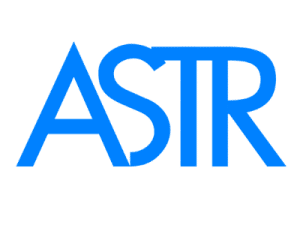Is the AIP Diet Safe?
Is the AIP Diet Safe?
What You Should Know Before Trying the Autoimmune Protocol
The Autoimmune Protocol (AIP) diet is widely praised in the wellness world as a go-to plan for managing autoimmune conditions. By eliminating inflammatory triggers like gluten, dairy, nightshades, and legumes, it promises relief from joint pain, fatigue, and digestive issues. But despite short-term benefits, the AIP diet can become unsafe when followed long-term.
Here’s what most people—and even many practitioners—don’t tell you: the AIP diet can lead to nutrient deficiencies, gut issues, hormonal imbalance, and disordered eating patterns if not followed carefully or without professional guidance.
What Is the AIP Diet?
The Autoimmune Protocol is an elimination diet that removes the following:
-
Gluten, grains, dairy, legumes
-
Nightshades (tomatoes, eggplants, peppers, potatoes)
-
Eggs, nuts, seeds, caffeine, alcohol
-
Processed foods, seed oils, and food additives
It is designed to reduce inflammation and calm autoimmune flares by avoiding common immune triggers. After the elimination phase (30–90+ days), foods are reintroduced one at a time to identify sensitivities.
1. The AIP Diet Is Extremely Restrictive
AIP eliminates dozens of whole foods for weeks or months at a time. While this may reduce symptoms temporarily, long-term restriction can lead to stress, food fear, and nutritional imbalance. Many people:
-
Struggle with low variety in their meals
-
Feel anxious about eating in social settings
-
Begin associating food with danger rather than healing
-
Experience burnout and unsustainable eating habits
📚 Barr, 2021; West et al., 2020
2. AIP Can Lead to Nutrient Deficiencies
By removing eggs, legumes, grains, nuts, and seeds, the AIP diet significantly reduces intake of key nutrients like:
-
Vitamin E, magnesium, and selenium
-
B vitamins (especially B6, B7, B12, folate)
-
Iron and zinc (especially for menstruating women)
-
Fiber and prebiotics essential for gut health
-
Plant-based phytonutrients from nightshades and legumes
Over time, these deficiencies may lead to fatigue, hormonal disruption, immune dysfunction, and digestive issues.
📚 Rogers et al., 2018; Ames, 2004
3. It Doesn’t Address Detoxification or Hormonal Root Causes
While the AIP diet is focused on food triggers, it often neglects the deeper root causes of autoimmune disease—such as toxin exposure, liver dysfunction, hormone imbalance, and gut permeability.
-
No specific support for liver detoxification pathways
-
Lacks guidance on endocrine health or stress regulation
-
Ignores the impact of environmental toxins in cookware, packaging, and cosmetics
Healing autoimmune conditions requires more than food avoidance—it requires restoring balance to the whole system.
📚 Heindel et al., 2017; Fasano, 2012
4. Reintroductions Are Inconsistent and Often Failed
Many people on AIP never reintroduce foods successfully due to:
-
Fear of flares
-
Lack of clinical guidance
-
No structured support or symptom tracking
This leads to long-term restriction without resolution, risking social isolation, poor gut diversity, and psychological stress—all of which worsen autoimmune symptoms.
📚 Satter, 2008; Kristeller & Wolever, 2011
A Better Alternative: The ASTR Diet
Developed by Dr. Joseph Jacobs, the ASTR Diet was designed to go beyond elimination. After years of personal and clinical experience with autoimmune disease, Dr. Jacobs created a system that:
✅ Removes inflammatory and immune-disrupting foods
✅ Supports gut repair and microbiome restoration
✅ Promotes safe detoxification through liver and lymphatic support
✅ Restores hormone balance and reduces stress
✅ Nourishes the body with nutrient-dense, sustainable meals
The ASTR Diet is based on four pillars:
-
Anti-inflammatory
-
Sustainable
-
Toxin-free
-
Restorative
📘 Learn more in Eat to Heal
AIP vs. ASTR Diet: What’s Safer Long-Term?
| Feature | AIP Diet | ASTR Diet |
|---|---|---|
| Removes inflammatory triggers | ✅ | ✅ |
| Nutrient-rich and varied | ❌ | ✅ |
| Supports detox and hormones | ❌ | ✅ |
| Restores gut and immune balance | ⚠️ | ✅ |
| Designed for long-term use | ❌ | ✅ |
| Personalized support and guidance | ❌ | ✅ |
Final Thoughts
The AIP diet may offer temporary relief—but long-term safety, sustainability, and full-body healing require a more complete approach. If you’re tired of guessing what to eat and ready to reverse autoimmune symptoms from the inside out, the ASTR Diet offers the structure, flexibility, and clinical insight you need.
📘 Start with Eat to Heal
👉 Book your free ASTR Diet consultation:
🔗 Schedule here
הפניות
-
Ames, B. N. (2004). A role for nutrient deficiencies in mitochondrial decay and aging. Annals of the New York Academy of Sciences, 1019(1), 406–411. https://doi.org/10.1196/annals.1297.064
-
Barr, S. (2021). The psychological impact of restrictive autoimmune diets. Nutrition Today, 56(3), 112–117.
-
Fasano, A. (2012). Zonulin and its regulation of intestinal barrier function. Physiological Reviews, 91(1), 151–175. https://doi.org/10.1152/physrev.00003.2008
-
Heindel, J. J., et al. (2017). Endocrine disruptors and disease risk. Nature Reviews Endocrinology, 13(7), 421–434. https://doi.org/10.1038/nrendo.2017.51
-
Kristeller, J. L., & Wolever, R. Q. (2011). Mindfulness-based eating awareness training. Journal of Eating Disorders, 6(3), 123–131.
-
Rogers, M. A., et al. (2018). Nutrient deficiencies in elimination diets. Clinical Nutrition, 37(5), 1661–1669. https://doi.org/10.1016/j.clnu.2017.06.012
-
Satter, E. (2008). The role of eating competence in nutrition and health. Journal of Nutrition Education and Behavior, 39(5 Suppl), S142–S153. https://doi.org/10.1016/j.jneb.2007.01.010
-
West, J., et al. (2020). Disordered eating risk in therapeutic diets. תֵאָבוֹן, 144, 104485. https://doi.org/10.1016/j.appet.2019.104485

